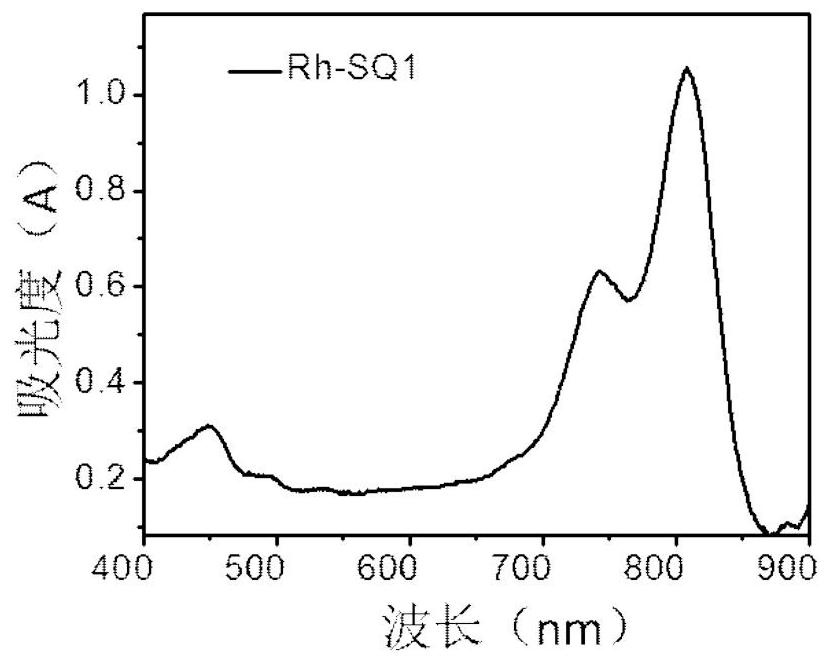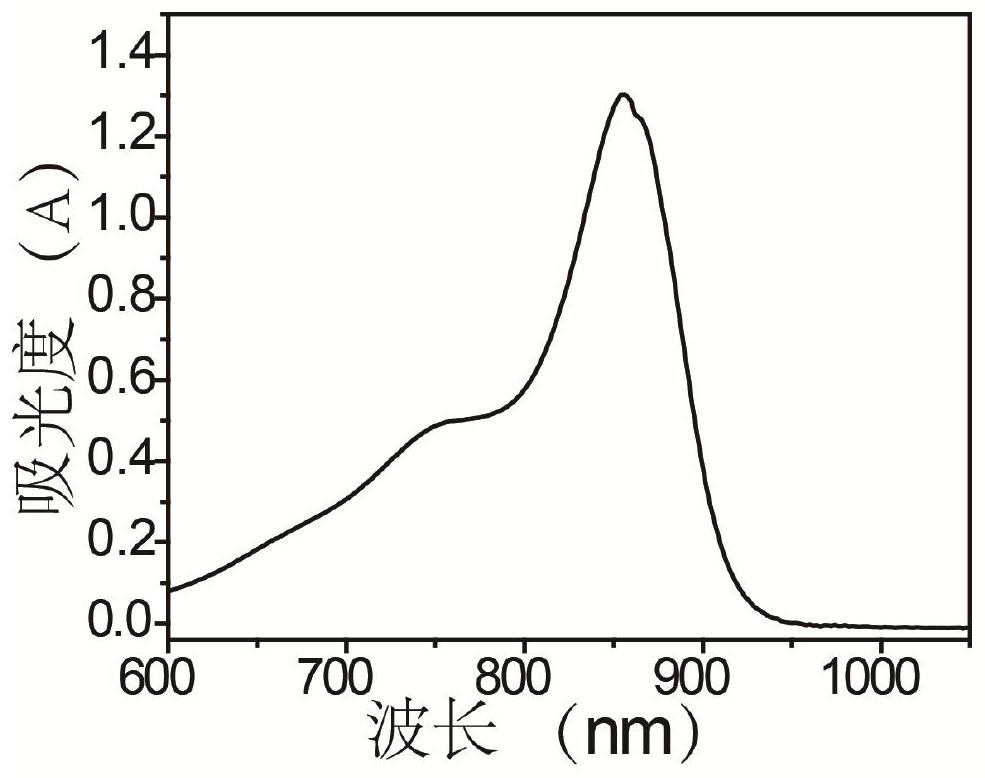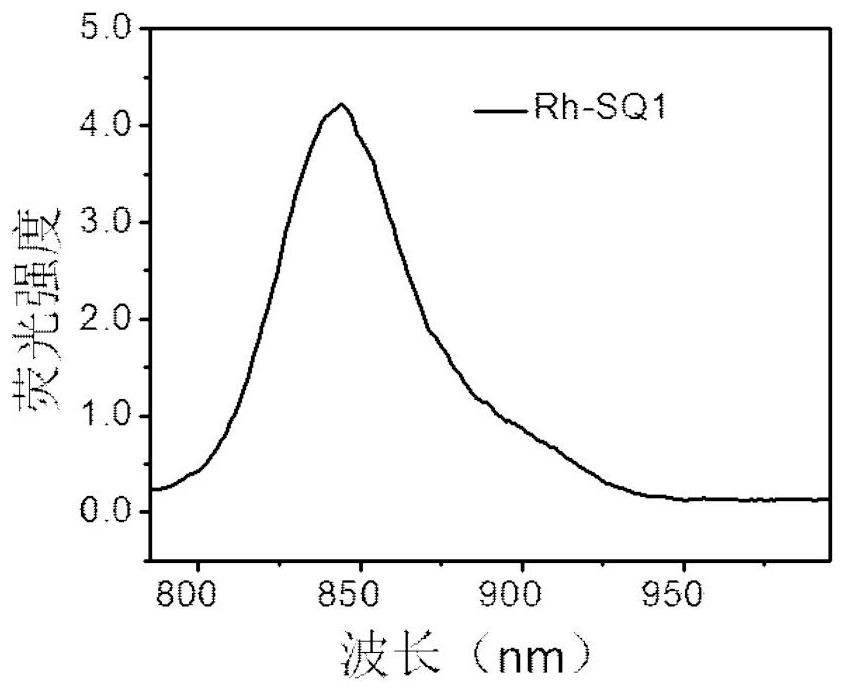pH fluorescent probe based on near-infrared fluorescent dye and its preparation method and application
A technology of fluorescent dyes and fluorescent probes, applied in fluorescence/phosphorescence, luminescent materials, chemical instruments and methods, etc., can solve the problems of slow assembly-disassembly of nanomaterials, difficult adjustment of pH response range, long-term tumor tissue, etc. Accurate and stable imaging effect, good light stability, and the effect of reducing light damage
- Summary
- Abstract
- Description
- Claims
- Application Information
AI Technical Summary
Problems solved by technology
Method used
Image
Examples
example 1
[0056] Example 1: Synthesis of near-infrared pH fluorescent probe Rh-SQ1.
[0057] Concrete reaction formula is as follows:
[0058]
[0059] step 1:
[0060] Add 0.5 mmol of rhodamine precursor compound a, squarylium (0.5 mmol) and 0.05 mmol of triethylamine to a three-necked flask equipped with a water separator, add solvent toluene, and heat to reflux for 24 hours under nitrogen protection. The solution turned from yellow to light blue. Stop the heating after the reaction, cool to room temperature, remove the solvent toluene by rotary evaporation, and purify and separate the obtained crude product by column chromatography to obtain rhodamine squarylium intermediate compound b. Wherein the column chromatography developing agent in the column chromatography purification and separation is composed of dichloromethane and petroleum ether with a volume ratio of 1:10.
[0061] The yield of compound b was 75%.
[0062] The NMR of compound b is as follows: 1H NMR (400MHz, CD3...
example 2
[0072] Example 2. Synthesis of near-infrared pH fluorescent probe Rh-SQ2.
[0073] step 1:
[0074] Compound b was synthesized according to the method of Step 1 in Example 1.
[0075] Step 2:
[0076] Mix 2,3,3-trimethylbenzindole, ethyl iodide and potassium carbonate solids and dissolve them in toluene, reflux reaction under nitrogen protection, after the reaction, cool the reaction liquid to room temperature, and filter to obtain the solid phase , and then the solid phase was washed with petroleum ether and then dried to obtain N-ethyl-2,3,3-trimethylbenzindole iodide compound d.
[0077] The yield of compound d was 93%.
[0078] The NMR of compound d is as follows: 1H NMR (400MHz, CDCl3, δ) 8.118(d, J=8.8Hz, 1H), 8.086(d, J=8.8Hz, 1H), 8.058(d, J=8.0Hz, 1H) ,7.822(d,J=8.8Hz,1H),7.752(m,1H),7.684(m,1H),4.872(q,J=7.2Hz,14.8Hz,2H),3.251(s,3H),1.889 (s, 6H), 1.684 (t, J = 7.2Hz, 3H).
[0079] Step 3:
[0080] Add 1mmol rhodamine squarylium intermediate compound b, 1mmol ...
PUM
 Login to View More
Login to View More Abstract
Description
Claims
Application Information
 Login to View More
Login to View More - R&D
- Intellectual Property
- Life Sciences
- Materials
- Tech Scout
- Unparalleled Data Quality
- Higher Quality Content
- 60% Fewer Hallucinations
Browse by: Latest US Patents, China's latest patents, Technical Efficacy Thesaurus, Application Domain, Technology Topic, Popular Technical Reports.
© 2025 PatSnap. All rights reserved.Legal|Privacy policy|Modern Slavery Act Transparency Statement|Sitemap|About US| Contact US: help@patsnap.com



